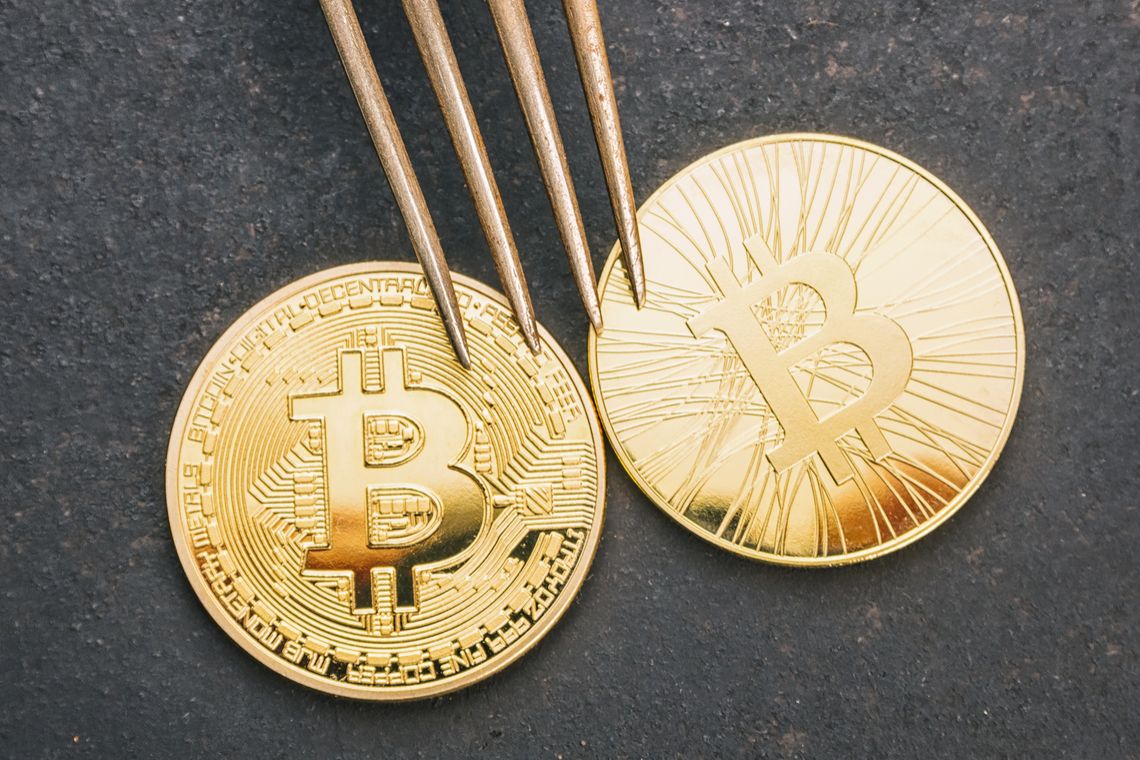For the past several months, Bitcoin has been in an extended downward spiral, bringing all other cryptocurrencies down with it. Prices have plummeted to 75 percent of their December 2017 high, losing more than $15,000 USD over the past year.
Despite this dramatic drop in cryptocurrency value, blockchain technology ventures and startups are still going strong. Cryptocurrency is merely the fiscal aspect of blockchain technology. With the recent volatility of the market, as well as a newfound awareness of certain cryptocurrency limitations, it is taking a bit of a back seat to other blockchain ventures.
Many new blockchain projects are now focusing on smart contracts. Smart contracts are essentially transactional capabilities made possible via Decentralized Applications, or DApps.
In the past, the Ethereum network was the platform of choice for smart contract and DApp development. Bitcoin and its offspring lacked the functionality, flexibility, and strength to support smart contracts.
However, Bitcoin Cash developer Tendo Pein recently announced the launch of Spedn, a Bitcoin Cash (BCH) smart contract-specific programming language, similar to C+ and developed exclusively for the BCH network. (Previous attempts to make the Bitcoin blockchain smart contract-friendly were thwarted by the native language, Script.)
Shortly after this announcement, Hello Diamonds became the first smart contract project to state an intent to launch on the Bitcoin Cash network.
SponsoredHello Diamonds has been a leading software and CRM provider for the diamond industry since 2010. With its recent foray into blockchain technology, they have somewhat taken on the role of trailblazers — becoming the first stablecoin to launch on Bitcoin Cash.
The Hello Diamonds team found the low transaction costs, high security, and fast, spacious block creation to be the primary factors in their decision to switch networks. Because they are building a stablecoin that is meant to be transparent, highly secured, low transactional-cost, and decentralized, Bitcoin Cash became the clear choice.
This decision was further solidified by the proliferation of initial coin offerings (ICOs) and blockchain projects that have flooded the Ethereum network over the past year or so. The sheer transactional volume taking place on the Ethereum blockchain has created a significant, ongoing backup. Hello Diamonds strongly sought to avoid this level of inefficiency.
A History of Stablecoins
In order to understand the needs of stablecoins such as Hello Diamonds DiamCoin, it is important to understand stablecoin origins.
The stablecoin concept is simple: a price-stable coin directly linked to an existing stable asset, making it resilient, specifically to cryptocurrency market volatility and extreme fluctuations. This concept enables cryptocurrency to be used very practically for everyday purchases of goods and services.
The decrease in value of both Bitcoin and Ethereum over the past year is a perfect example of how desperately cryptocurrency needs a method of price stabilization. Coming off an all-time high of nearly $20,000 USD in December 2017, Bitcoin has dramatically plunged over the past year to a current value of close to $4,100 USD. This unprecedented rise and fall is a situation that stablecoin seeks to completely avoid.
However, it is not just the massive price fluctuations over the past twelve months that make Bitcoin impractical for everyday transactions, or even practical as an investment. The fact that Bitcoin and Ether are capable of 10-20 percent increases and decreases in twenty-four hour periods is enough to make them a risky proposition as both a payment method and an investment.
The most notorious example of this is the pair of pizzas purchased in 2010 by Laszlo Hanyecz, a programmer, for 10,000 BTC. That 10,000 BTC was worth $193 million USD at Bitcoin’s December 2017 peak.
However, the concept of a stable currency is applicable and important to any and all purchases, regardless of frequency, amount, or type of purchase. Consumers negotiate and strategize on large purchases such as homes, vehicles, and electronics. However, shoppers are just as likely to drive a couple miles out of their way or longer than is really comfortable given their gas gauge to save a few pennies per gallon on fuel. This is why stores like Dollar Tree, Walmart, and even Costco exist: consumers are motivated to save money, whether out of necessity or principle.
To introduce yet another factor into the existing complexities of everyday cost analysis, such as oil prices, coupons, specials, and quantity, would be unreasonable — even bordering on impossible. This is particularly true given the harsh reality that a $20,000 USD purchase today could be worth $500 million two years from now. Or it could be worth $0.75 USD. That kind of volatility makes it impossible to sustain a strong economy.
Whether the stability potential of a coin is being analyzed for the short-term or the long-term, currency stability is critical. For transactions both large and small, short-term stability is critical. Long-term stability is equally important however, primarily for investment purposes and holding onto wealth.
Most cryptocurrencies on the market today are looking to provide the following key traits essential for a viable economic digital currency: decentralization, privacy, security, scalability, and price stability. Most are decentralized. Many offer privacy, with varying levels of security. Many of the newest altcoins claim to offer high levels of scalability. However, the only cryptos that currently offer a reasonable degree of stability are stablecoins.
Sponsored SponsoredSeveral cryptocurrency stablecoins have hit the market over the past several years looking to solve the stability issues plaguing blockchain-based currency. They have all displayed varying degrees of success, and most lack either key functionality for a payment method, or key components of a digital or cryptocurrency that make it stand out from fiat money.
Tether (USDT) is possibly the most well-known of all the stablecoins available today. Tied, or tethered, directly to the U.S. Dollar, the tether conversion rate is literally one tether USDT is equal to $1 USD. This coin has remained and will continue to be fully backed by the USD, as all Tether coins in circulation are less than the fiat currency held in the Tether bank account as collateral.
While Tether does solve the issue of cryptocurrency price stability, the platform is not decentralized, nor is it trustless. For these reasons, it has struggled to maintain relevance within the cryptocurrency space.
A second and completely different type of stablecoin concept is Havven. The premise behind this stablecoin is a dual coin system. The coins in everyday circulation, called Nomins, are used for payment and holding purposes. They are backed by an equal amount of Havven tokens, which sit in reserve. As transactions take place, Havven collects fees, which are then distributed back to coin holders as a reward for supporting and maintaining the self-backing system.
Unfortunately, despite its entirely decentralized nature, Havven is a shaky prospect due to its short and unproven existence. It also takes the decentralization concept to a far extreme, making it a risky venture for investors.
Hello Diamonds and their DiamCoin is one of the latest stablecoin concepts to hit the market. Backed by the proven asset of diamonds, a collateral that is projected to not only maintain value but to grow in the years ahead, DiamCoins exist to further the convenience and innovation of blockchain technology while simultaneously holding onto the stability of fiat currency.
Hello Diamonds has recently announced a pretty big change in plans: it will be transitioning from the Ethereum network to Bitcoin Cash’s brand new smart contract platform, Wormhole.
A Brief History of Bitcoin Cash
Bitcoin Cash (BCH) was born on August 1, 2017, and is the product of a long-planned hard fork on the Bitcoin network. The fork was officially scheduled for 12:20 P.M. UTC. In reality, it took place a few minutes later when a different block was initially discovered. The split became real about six hours later when a mining pool in China found the first Bitcoin Cash block.
The 2017 Bitcoin hard fork took place primarily to solve scalability issues plaguing the original Bitcoin (BTC) network. With an end goal to increase block size on the BCH fork from 1mb to 8mb, developers were also seeking to address transaction fee issues and other conflicts mostly related to slow transaction speeds within the BTC network.
Bitcoin Cash experienced some early setbacks as it established a spot in the cryptocurrency market. First of all, opponents argued that the hard fork exactly duplicated all the existing BTC, doubling the crypto holdings of all Bitcoin owners. The obvious concern was that value was being created out of essentially nothing.
SponsoredEthical concerns were also raised. The cost to launch a hard fork and its resulting clonecoin is very low. However, the operational costs to maintain a clone coin — in this case, BCH — are quite high, both in terms of infrastructure capacity and digital currency exchanges such as Coinbase.
In fact, several major exchanges, Coinbase included, stated an intent to not support BCH. Without quality testing, compliance and regulatory reviews, and other standard procedures that always take place prior to an exchange taking on a new coin, the prospect was risky. Exchanges complained that they were being manipulated into supporting an untested and potentially catastrophic coin.
BCH has solved many of the issues experienced right after the hard fork. Specifically, because of the easy mining algorithm naturally created by BCH, it became easy for miners to determine highly profitable mining periods based on the volume of transactions hitting the network. The establishment of a more dynamic mining algorithm has stabilized BCH blockchain mining fees, encouraging more consistent mining activity.
Bitcoin Cash is well on its way to living up to its name. Designed as a tool to increase transactional ease and capability, BCH was designed primarily as a solution, not a competition. It solves transactional difficulties by introducing lower fees and faster transaction speeds. This was accomplished mainly by simplifying the process while also strengthening the platform.
An advantage to simplification is the newfound capability of a Bitcoin network to support smart contracts. Wormhole smart contracts are purported to be highly user-friendly, allowing users to easily create tokens on the BCH blockchain for the very first time. Wormhole is successful based on BCH security, the larger blocks of BCH, its fast transaction speeds, and low fees per transaction.
The Current State of BCH and Its Effect on Cryptocurrency as a Whole
However, the first year of existence for Bitcoin Cash has been rocky, as many BCH holders sold off their shares of the altcoin. This caused a drop from a high of $900 USD at its inception to $300 by November 2017.
The coin’s volatility showed no signs of slowing over the next year. It remained closely aligned with overall market trends throughout the momentary highs of December 2017. It also displayed the same downward spiral experienced by the rest of the crypto market for the entirety of 2018, with the exception of fleeting gains in spring that quickly dipped even lower than they rose.
Finally, on November 15, 2018, Bitcoin Cash experienced its own hard fork which created rival coins Bitcoin Adjustable Blocksize Cap (ABC) and Bitcoin Satoshi’s Version (SV). This split was the result of developer disagreements over blockchain size. Roger Ver and Jihan Wu touted the Bitcoin ABC software, which would limit the block size to 32mb. Led by Craig Wright and Calvin Ayre, Bitcoin SV promoted increases in block size of up to 128mb.
Both blockchains put forth a highly assertive effort in a “hash war” to ensure market dominance by shifting mining away from BTC toward BCH directly after the split. In the unregulated crypto market, both sides were engaging in other risky and borderline unethical behaviors in addition to mining priority shifts, including mining empty blocks.
Sponsored Sponsored[bctt tweet=”In the unregulated crypto market, both sides were engaging in other risky and borderline unethical behaviors in addition to mining priority shifts, including mining empty blocks.” username=”beincrypto”]
As a result, BTC prices slipped even further, leaving the cryptocurrency market as a whole in shambles. The ramifications of this are still heavily felt throughout the market as investors await correction.
Eventually, BCH ABC won the listing of BCH on major exchanges such as Coinbase, Kraken, and Bittrex. They accomplished this by accumulating more Proof-of-Work (PoW) than BCH SV did. However, other exchanges, including Binance, opted to keep BCHABC and BCHSV tickers, rather than assign one as the “winner.” Other exchanges have opted to remain similarly neutral.
BCH SV continues to maintain the position that it is, in fact, the original Bitcoin. Craig Wright, who has frequently claimed to be Satoshi Nakamoto, asserts through various outlets that other iterations of Bitcoin have lost Nakamoto’s original premise by minimizing the value of consensus, trust, and other core principles that the original Bitcoin was founded upon.
BCH SV is currently working to establish itself as a completely separate coin entity from Bitcoin Cash. Developers claim to be attempting to accomplish this as soon as possible.
The Future of BCH, Stablecoins, and Cryptocurrency
According to some predictions, Bitcoin Cash SV is by far the stronger of the two competing forks and the one to watch. These same analysts, such as former Reddit crypto expert Ryan X. Charles, warn of the most ambivalent of potential outcomes. They state that BCH SV will either fall to zero or eventually sell as high as $1 million USD per coin. In the latter scenario, all other cryptocurrencies will fall to zero.
In this analysis, both outcomes are potentially catastrophic for investors. It is important to note that this issue is heavily contentious amongst crypto enthusiasts, with nearly everyone taking a strong stance in favor of one side or the other. Bitcoin Cash SV proponents believe in the strength of their platform, while Bitcoin Cash ABC followers have taken an entirely different position.
Other, more middle ground estimates put BCH SV experiencing a 100 percent increase in cost in the coming months, possibly gaining $100 USD, which would put it around $200 USD.
With Bitcoin Cash ABC currently holding the favor of the market, predictions for this coin are of the kinder, gentler variety. BCH ABC analysts base their favorable predictions on a variety of factors. These include the capability for smart contract transactions due to a similarity to Ethereum functionality as opposed to Bitcoin. Also, they are factoring in high scalability potential and a strong presence on BCH nodes, with BCH ABC present on two-thirds of the nodes.
Due to these factors, experts speculate that BCH ABC could grow in the months ahead. However, due to the ongoing and unpredictable bear market cryptocurrency as a whole is deeply mired in, it is impossible to predict the future of such a contentious coin, particularly one that can take partial blame for the market’s current state.
Most reputable investment advisors, however, expect a continued gradual increase as the market stabilizes. This stabilization will occur as the pain of a second Bitcoin hard fork subsides, the novelty of a Bitcoin-based smart contract platform wears off, and the glut of Ethereum-based DApp developers recognize the potential of the Wormhole platform and move to take advantage of its fresh smart contract development offerings.
What are your thoughts on the Bitcoin Cash and stable coins? Let us know in the comments below!





